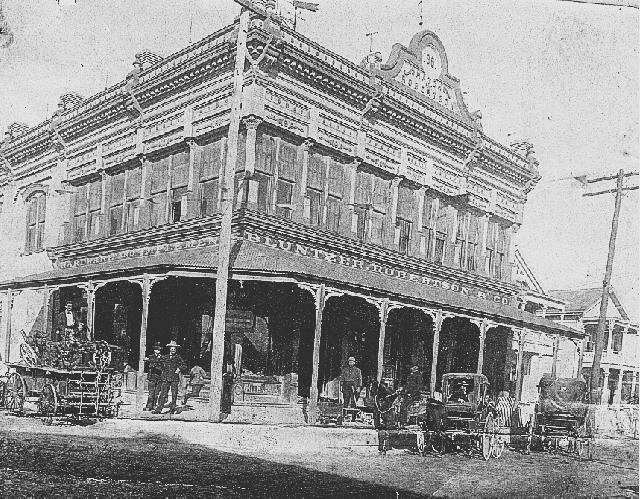
A cold front will cross the Great Lakes and Northeast U.S. through Monday with gusty winds and areas of rain showers. A strong atmospheric river is expected to move into the Pacific Northwest by midweek bringing a threat for moderate to heavy rainfall, gusty winds, and mountain snows for parts of Washington, Oregon, northern California, and the Sierra Nevada. Read More >
 |
| U.S. Weather Bureau - Corpus Christi Office 1901 through 1908. Downtown Corpus Christi Hatch and Robertson building, corner of Mesquite and Peoples Street, 2nd floor. |
On February 9, 1870 President Grant signed into law a resolution requiring the Secretary of War to provide meteorological observations at military stations and other states and territories. This agency was called the Division of Telegrams and Reports for the Benefit of Commerce.
The new agency operated under the Signal Service from 1870 to 1891. In 1890, Congress voted to transfer the agency to the Department of Agriculture and renamed it the Weather Bureau. Although the parent agency was changed to the Department of Commerce in 1940 the Weather Bureau name remained unchanged. In 1970 the Weather Bureau name was changed to the National Weather Service, although it's primary function of public service remained the same.
The Corpus Christi National Weather Service Office began operations in downtown Corpus Christi on February 1, 1887 at the George French Building at the corner of Chaparral and Starr streets. On July 10, 1901, the offices were moved to the Hatch and Robertson building at the corner of Mesquite and Peoples streets, occupying three rooms on the second floor. On November 1, 1908, a third move was made to the City National Bank Building at the corner of Chaparral and Peoples street. While at this location, the strongest hurricane to ever strike the Texas coast made landfall over the city causing over 300 deaths. On January 1, 1921, the weather office was moved to the Federal Building located at Broadway and Starr streets.
A Weather Bureau airport station was established at Cliff Maus Field, the municipal airport in Corpus Christi, on January 28, 1939. The downtown office and airport station were consolidated at the airport's Weather Bureau building on October 15, 1942. A standby hurricane emergency office was maintained at the downtown Federal Building until 1946. A move to its second airport location, the second floor of the international airport tower building, was made on August 8, 1960. Finally, on November 7, 1995 the new office at 300 Pinson Dr. on the grounds of the Corpus Christi International Airport was occupied.
Technological advances during the 60s and 70s, including weather satellites and high speed computers, brought many changes throughout the weather service. Weather radar advances during the 1970s resulted in a local warning radar, the WSR74-C, beginning operations at Corpus Christi on February 1, 1976. The Corpus Christi NOAA Weather Radio, KXB-41, began 24-hour broadcasts of weather information on a VHF frequency 162.55 Mhz in June, 1967. The upper air program, one of about 100 sites around the country, was moved to the Corpus Christi office in November, 1989.
The National Weather Service has undergone a nationwide major restructuring and modernization program that began in the mid 1980s. This program has brought about major improvements in facilities and technology to the Weather Service in Corpus Christi, including a new 3.5 million weather facility and doppler radar. This modern weather facility, which opened on November 7, 1995, utilizes state-of-the-art technology including the WSR-88D Doppler radar system, ASOS (Automated Surface Observing System), and AWIPS (Advanced Weather Interactive Processing System) computers. A highly trained staff of more than 20 employees can now utilize this equipment to provide improved weather forecasts and warnings to the Coastal Bend and adjacent South Texas areas.
The modernization of the NWS will continue at the Corpus Christi weather office into the 21st century as additional staff and more sophisticated computer systems are deployed. The new facility, doppler radar and AWIPS were three major steps toward the continued dedication to protecting and serving the public. This tradition has and always will be the mission of the National Weather Service.